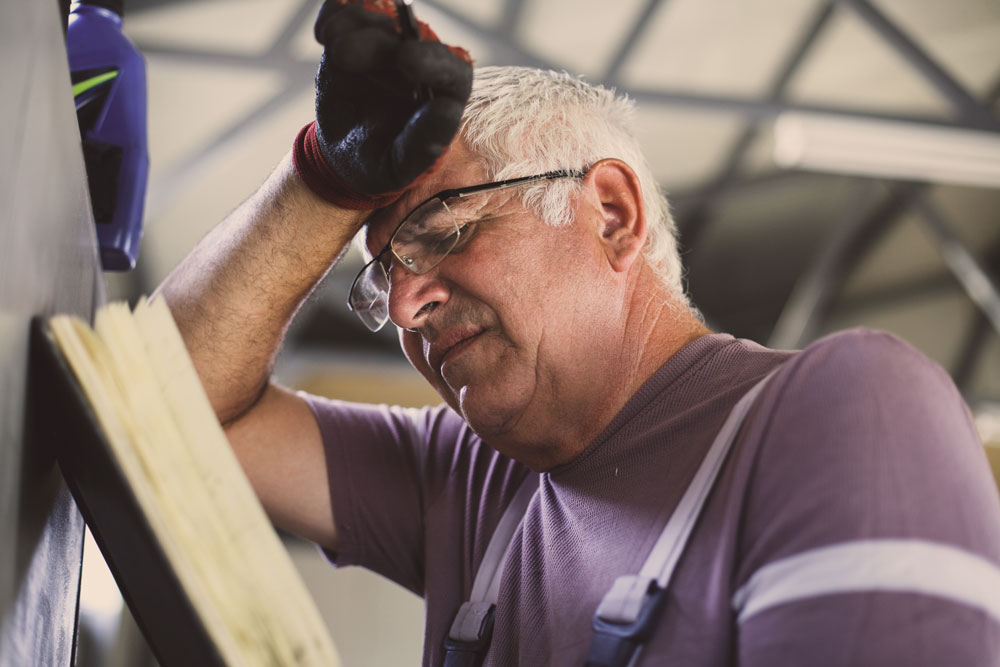
COVID-19 leadership challenge: putting people first
June 24, 2020
By Karin Lindner
 Photo: Liderina/Getty Images
Photo: Liderina/Getty Images It already feels like a different world than we knew it just a few months ago. Everyone has been forced to slow down because of COVID-19 – people, companies and even fast-paced industries like manufacturing.
Many employees and leaders are struggling with the tremendous amount of change and uncertainty that this global pandemic has brought to our doorsteps.
It has never been more difficult for leaders to demonstrate emotional intelligence while navigating through uncertainty at the same time. Employees have so many questions and the leaders often don’t have all the answers.
There is a whole range of different emotions that comes with these turbulent times but people, especially those in the manufacturing industry, are not used to talking about their emotional state. They’d often rather hide how they feel and pretend they are okay.
It has never been more difficult for leaders to demonstrate emotional intelligence while navigating through uncertainty at the same time. Employees have so many questions and the leaders often don’t have all the answers.
Many leaders may notice a change within themselves and within their team members, but they hope that nervousness, fear and anxiety will just magically disappear without having to talk about it. Emotions are deeply personal, rather than factual.
Is there a difference between fear and anxiety? Yes, there is. Fear is the emotional response of a real or perceived imminent threat, while anxiety is the anticipation of a future threat.
Anxiety is a natural stress response and not necessarily a bad thing, because it pumps adrenaline into the body. It can stimulate and help people to use this energy to reach new heights. Anxiety and other negative emotional states are rarely the problem – but not knowing what to do about it can be.
Fear and anxiety start in the mind, but so does courage.
During these uncertain times, people are overwhelmed, stressed and they often worry about their future. It is important to recognize that worrying comes from the way people think, and how they think comes from what they focus on.
Where is the opportunity for leaders in all of this? There are several ways to connect with employees:
1. Improve on emotional intelligence.
Employees at all levels have to be given the tools on how to manage their emotional state. Emotions need to be dealt with, processed and released in order to live a healthy and productive life. The first step is the awareness that they can do something about it.
2. Pay attention to energy management.
How many hours are lost because employees’ mental energy and productivity is wasted on things that are outside of their control?
3. Establish rapport.
If team members resist progress and change, it is usually because there is a lack of rapport with their immediate manager. It is so important that managers are interested in what’s going on for their team members. What are the team members’ fears and desires? If managers care about their employees, the employees will ultimately care about the business.
4. Assign a new meaning.
What meaning can you give to COVID-19? Is it the opportunity to build hope, trust and a greater level of connection that will help innovation and creativity – or has it become a struggle of survival without learning new things?
5. A new way of being.
If leaders think more about “how to be” rather than what to do, it will create new opportunities and outcomes.
Here are some strategies that manufacturers should put on the forefront for their employees’ mental, emotional and physical health:
- Allocate energy wisely – to family and friends, health and wellbeing, self-improvement, contribution to others and to work of course
- Breathe and think before responding
- Avoid taking things personally
- Reframe a negative situation into a positive one
- Refuse to stress over things that cannot be controlled or changed
- Value small experiences to boost happiness
- Take regular technology breaks
- Reduce screen time
- Spend “alone time” to recharge batteries
- Take control of emotions by asking “Is this really worth getting upset about?” or “How much will this matter one year from now?”
- Restore energy by spending time in nature
- Be patient and kind with yourself and others
These times require extraordinary leadership. It can be a challenge to bring out the best in people, but it isn’t nearly as difficult as many may think.
All it requires is the ability to keep an open mind and the willingness to approach things from a different perspective. Putting people first will help companies to have a “comeback” that is better and stronger than ever.
Karin Lindner is the founder of Karico International Inc. She works with leadership teams to increase their personal and organizational effectiveness by fully engaging the energy, talent and intelligence of the workforce.
This article originally appeared in the June 2020 issue of Manufacturing AUTOMATION.
Advertisement
- NGen invests $6M in three manufacturing projects responding to COVID-19
- Feds prepared to push back against any new U.S. tariffs on aluminum, Duclos says